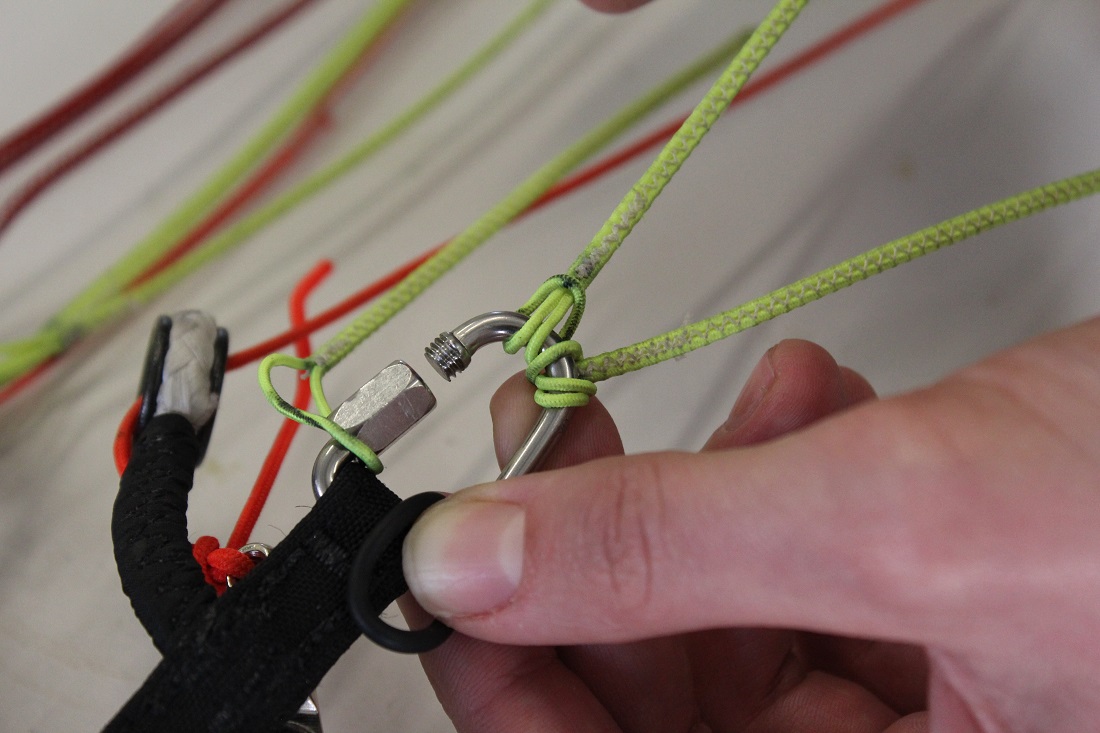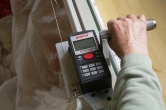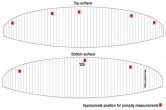Glider Maintenance Inspection includes the following
- Visual glider check
- Porosity check
- Line attachment points checked to 20kg loading
- Riser check including O Ring replacement
- Full line laser length test and glider re-trimmed to factory specifications
Add a gldier and harness warrant, this is a requirement to fly legally in NZ. These warrants are valid for 12months.
A PDF report is provided showing all test results.
GLIDER INSPECTIONS
Your wing should be technically checked to ensure proper airworthiness. Regular checks will ensure that your wing remains in a good condition and in the correct trim. This will not only make flying safer but it will also give you peace of mind. If you sell your glider, you should poduce an inspection certificate to prove its airworthiness.
Your wing should be checked for the first time after 24 months and every 12 months thereafter. If you are a frequent flyer (more than 80 hours per year), or perform acrobatics or you use a lightweight wing then we recommend that you get your glider checked after every flying season. If your glider is used professionally for training purposes or for tandem flights then a complete maintenance check must be carried out every 12 months. Without this periodical maintenance check, the airworthiness of the glider cannot be guaranteed and it may not conform to the EN/LTF standard that the glider was manufactured to.
We recommend that the maintenance check is carried out by a qualified professional. You are responsible for your flying kit and your safety depends on it. Take care of it and regularly inspect all of its components. Changes in a wings launching and/or flying characteristics indicates the aging of the glider, if you notice any changes you should have the wing checked before flying again.
GLIDER MAINTENANCE INSPECTION
VISUAL INSPECTION OF THE CANOPY
A full visual check should be carried out.
This will also help identify any damage to the coating of the cloth. All the components of the wing should be checked: panels; stitching; ribs; diagonals; line attachment points; tabs etc.
Checking for any tears, holes or damaged/loose stitching and repair accordingly. Large areas of damage will need replacement panels. Complex or large scale damage, especially to the ribs or in structurally important areas may need a factory repair.
POROSITY
Checking fabric porosity is the first test we do on a service, particularly important for a glider nearing the end of its serviceable life. The porosity meter measures how long it takes to draw 0.25 litres of air through a small (38.5 cm2) area of fabric using a weight hanging from rubber bellows. For a new glider this will take several minutes, but that time declines 10% to 30% a year, and sometimes as much as 50%. Anything less than 20 seconds we will examine very carefully.
Manufacturers’ guidance varies on exactly how porous a fabric can become before a glider becomes unairworthy, but typically it corresponds to readings around 10 to 15 seconds.
LINE LENGTHS
All gliders can go out of trim, often in a predictable way. Dyneema lines settle in over the first 25 to 50 hours of flying. Kevlar lines also shrink over time, although usually at a slower rate. All linesets can be seriously affected by damp or heat, and these changes can be less predictable.
Many paraglider manufacturers use a mix of Dyneema and Aramid (Kevlar) lines. For example, the more heavily used main A and B-lines are made from Dyneema. It has a higher breaking load and UV resistance but also changes more quickly. For the main C-lines Aramid is used, because it has to withstand a lower load and the trim stability of Aramid lines plays a major role.
The most common pattern we see is that the rear lines shrink by more than the heavily loaded front lines, increasing the angle of attack of the wing. Performance issues that follow can include a lower trim speed and reduced top speed, a tendency to hang back when launching, impaired glide angle and soggier handling. Safety can be affected too: the glider is that bit closer to stalling, going parachutal or spinning.
It used to be thought that stretching the shrunken lines would sort them out. But it’s now well recognised that stretching gives only short-lived benefits, as lines tend to revert to the same pre-stretched length fairly quickly
So if lines shrink, some more than others, and stretching them is not the answer, what is? Well, it is possible to replace lines, but that’s often unnecessary and more expensive than the alternative. Typically the best approach is to shorten the effective length of the relatively longer lines to match the shorter lines. That can be done by taking additional loops at the maillons, and occasionally further up the cascades if necessary.
RELATIVE TRIM VS. ABSOLUTE TRIM
A relative trim is performed. This means the lines are adjusted to each other in order to optimise the angle of attack. This means the length of one line is oriented to the other lines. The entire wing is taken into consideration and the aim is not - as with the absolute trim - to adjust all lines back to the original length
Sometimes the improvement can be quite subtle but occasionally the difference after trim can surprise the pilot.

RISERS AND HARDWARE
Check lengths and check that the risers are in visually good condition with no abrasion damage, paying particular attention to the maillon hang loops and the main suspension loop. Ensure that all maillons are undamaged and are done up correctly. Replace any missing rubber O rings.
Taking care of your canopy
- UV Don’t lay your glider out in the sun while waiting to take off. Rose it up and if possible, put it in shade.
- Heat Avoid leaving your wing in a hot car.
- Damp Even if your glider only got slightly damp, don’t leave it wrapped up that way until you next fly.
- Abrasion Avoid walking on your wing, and perfect those ground handling skills to minimise dragging it across the ground.
- Sand Empty out sand immediately because the particles can damage the fabric coating, particularly when packing away.
- Dirt A damp cloth is the best approach. Avoid getting your glider thoroughly wet and never use detergent or chemicals.
- Salt Like dirt – best avoided if possible. If your glider gets soaked in the sea, rinse in fresh water as soon as possible – don’t let salt crystals form in the fabric and lines.
Reserve service life
Manufacturers specify a service life for their emergency parachutes. For most brands that is 10 years, but we know some that specify longer. In those cases, the manufacturers offer extended periods provided the reserve has been repacked and inspected in accordance with their recommendations. It’s worth looking at this aspect when you buy a reserve, because if you think about the cost as an insurance policy lasting for the service life of the reserve, a longer life will give you a smaller cost per year.
For some pilots, cynicism about the motivation of manufacturers specifying a service life is all too apparent online. “They would say that, wouldn’t they – they just want to sell a new one when my existing one is still perfectly good”. And that response is perfectly understandable. Another response is to ask about the scientific basis for concluding that a reserve is no longer safe to use – surely it must be possible to test whether a reserve is still safe?
The basic problem for manufacturers is that they know the materials they use degrade over time and become weaker, similarly to our gliders. But they have no control over the conditions to which the reserve will be subjected. Will the pilot ever get the reserve wet or sit on it on a damp hillside? Will it be left damp inside a harness for months on end? How long might it be baked inside a car in sunny conditions? Will sand and dirt left be inside the harness without being promptly cleaned out? Will it be exposed to UV or corrosive contaminants like salt or petrol fumes? Repeated use of the parachute and even handling during repacking itself can contribute to material strength loss! Unfortunately, degradation is not visible by simple visual inspection and can only be established by destructive strength testing of the actual material from which the canopy and lines are manufactured. The more experienced manufacturers build in such losses into their design calculations, and their declaration of a ten year service life is based on many years of experience, allowing for the deterioration of synthetic materials in temperate conditions.
Drop your glider to
Fitco Gym, 13th Avenue Tauranga


